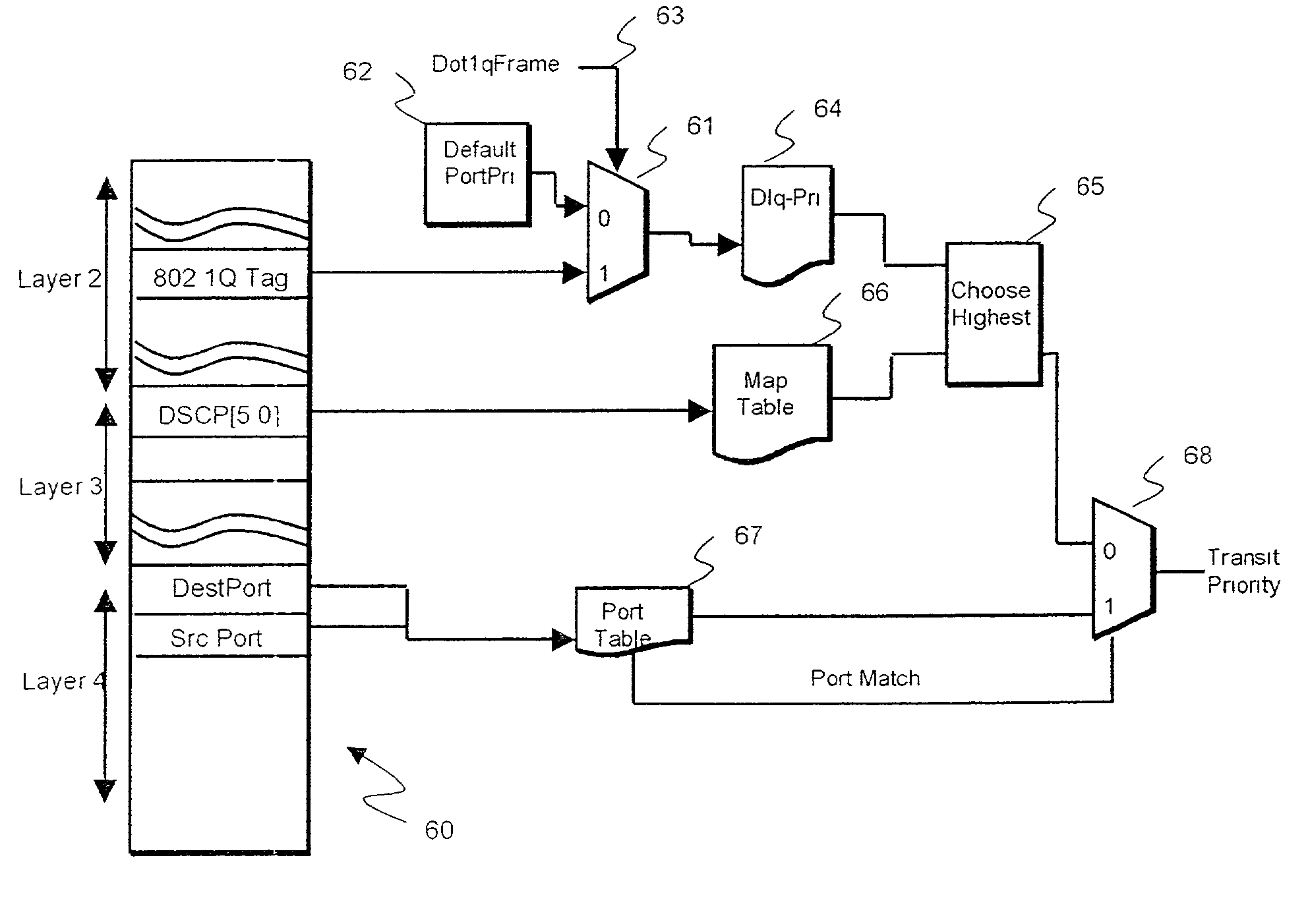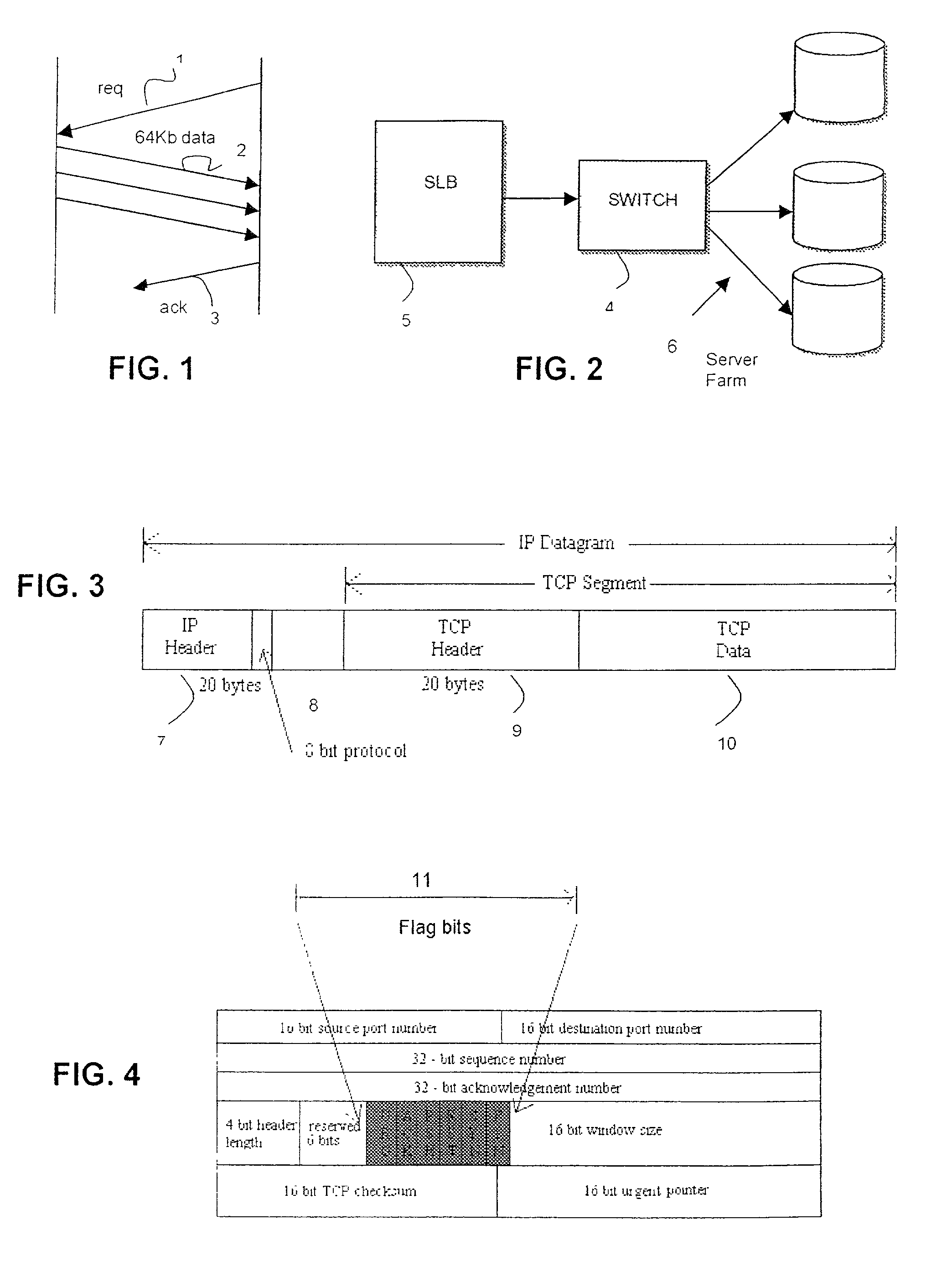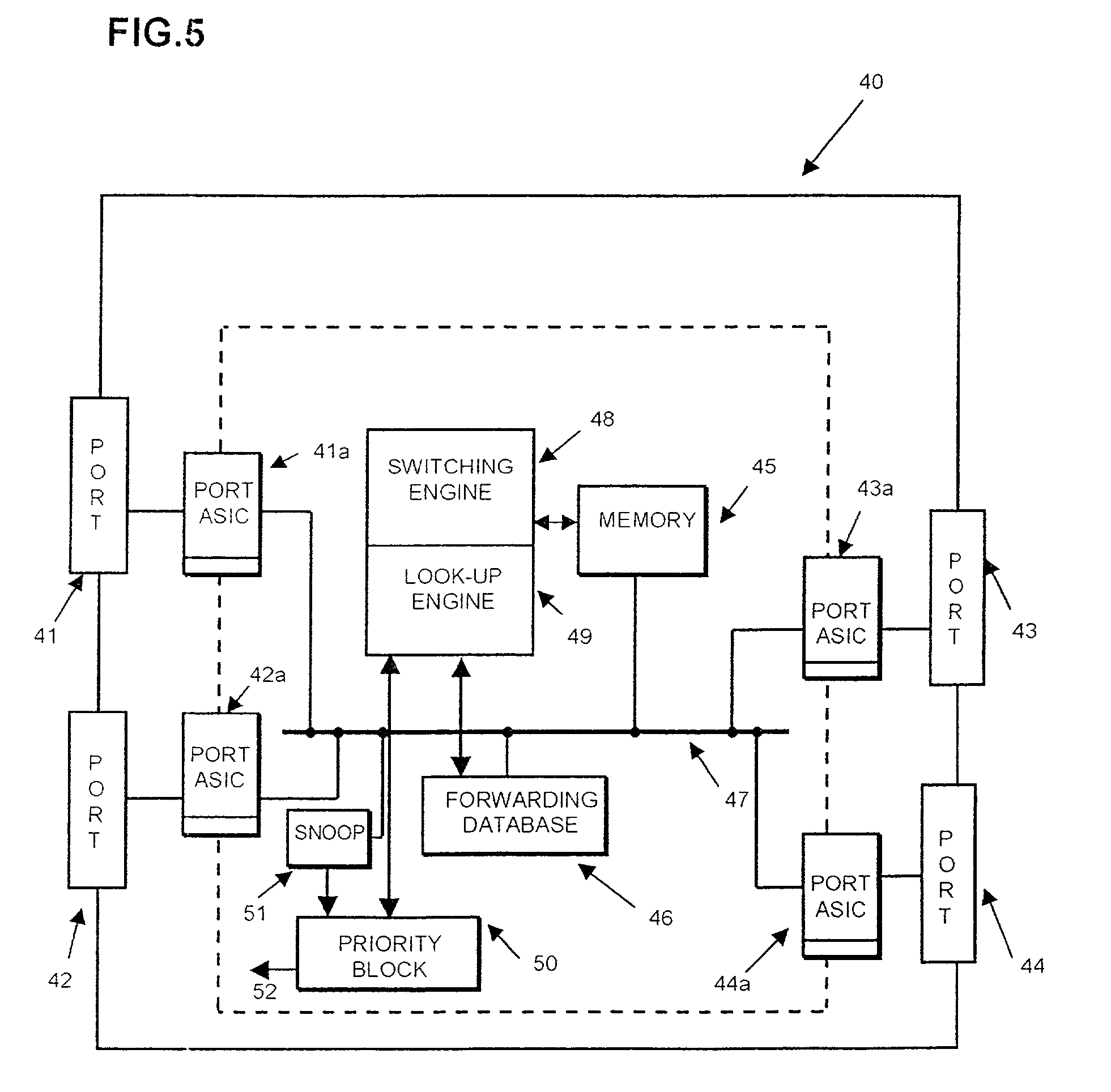TCP control packet differential service
a packet differential and packet technology, applied in the field of packet-based data communication networks, to achieve the effect of minimizing the likelihood reducing the probability of tcp control packets, and improving the quality of service ratings
- Summary
- Abstract
- Description
- Claims
- Application Information
AI Technical Summary
Benefits of technology
Problems solved by technology
Method used
Image
Examples
Embodiment Construction
[0019]FIG. 1 of the drawings illustrates in a simplified form a transmission between a client and server. In this schematic diagram the client issues a request 1, the server sends data 2 in response and the client then sends acknowledge 3, but the acknowledge signal is dropped.
[0020]In consequence, the whole procedure requires retransmission. If the acknowledge signal is given a higher priority, this circumstance is less likely to occur and retransmissions are more constrained to circumstances of dropped data packets.
[0021]FIG. 2 schematically illustrates an advanced Server Load Balancing (SLB) device 5, high speed switch 4 and server farm 6. In this system the SLB device will set up and tear down sessions using the TCP control traffic. This means that the TCP control traffic is no longer solely being used by the client and server, it can now be classed as management traffic. This use of TCP control packets means that the system would benefit from them being assigned a higher priori...
PUM
 Login to View More
Login to View More Abstract
Description
Claims
Application Information
 Login to View More
Login to View More - R&D
- Intellectual Property
- Life Sciences
- Materials
- Tech Scout
- Unparalleled Data Quality
- Higher Quality Content
- 60% Fewer Hallucinations
Browse by: Latest US Patents, China's latest patents, Technical Efficacy Thesaurus, Application Domain, Technology Topic, Popular Technical Reports.
© 2025 PatSnap. All rights reserved.Legal|Privacy policy|Modern Slavery Act Transparency Statement|Sitemap|About US| Contact US: help@patsnap.com



